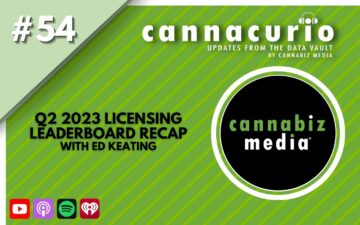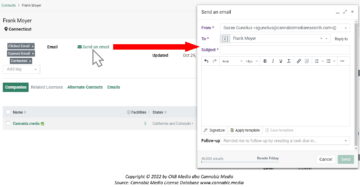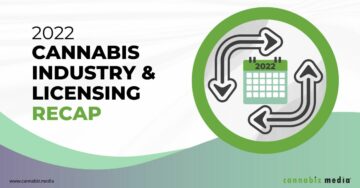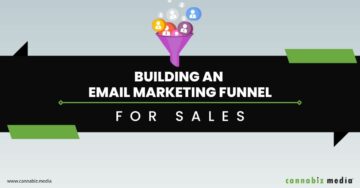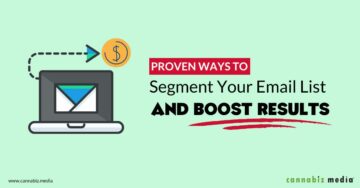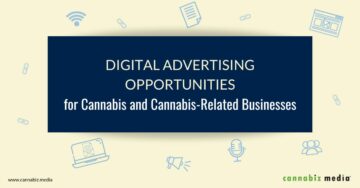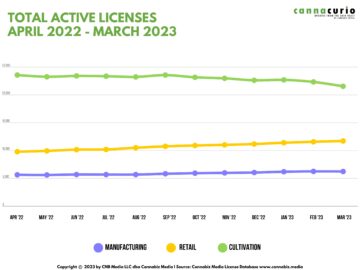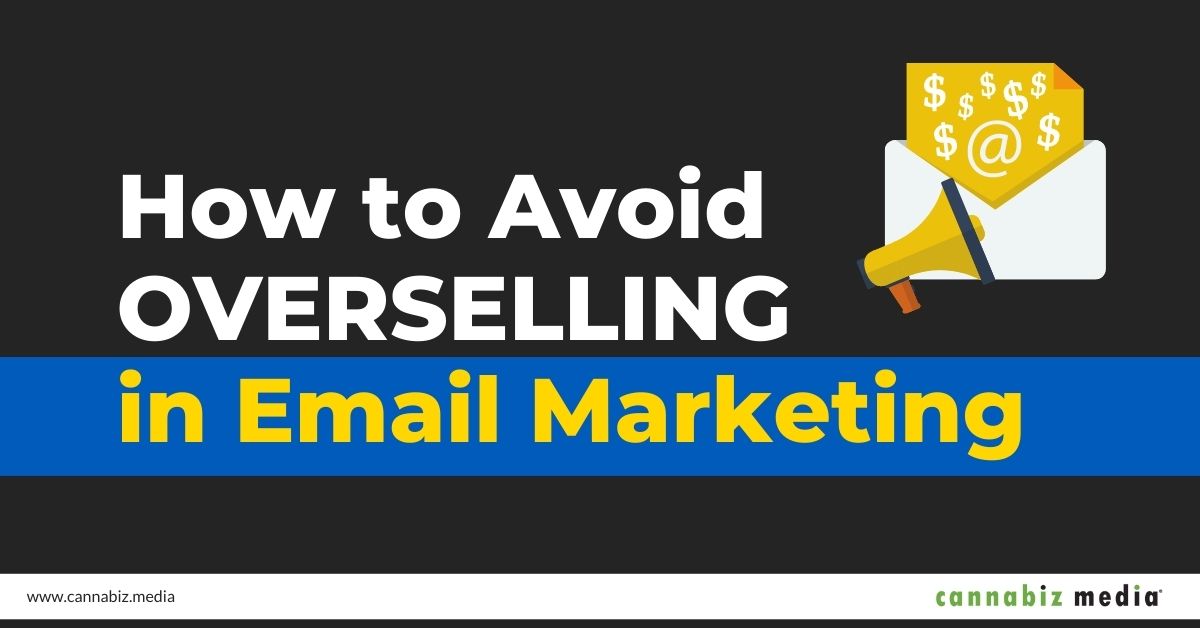
If the only email marketing messages you send to your audience are sales messages, then your results are unlikely to always be positive. The reason is simple. Not everyone is ready to buy when they receive your message.
There is a reason why we call it “email marketing” rather than “email sales.” For email marketing to be successful, you need to meet your audience where they are. You can’t expect them to leap to where you want them to be.
That means the majority of messages you send via email marketing won’t be entirely sales-oriented. Instead, you’ll send far more informational messages to build brand awareness, increase trust, and nurture relationships with your audience. Your goal is to learn about your various audience members, identify where they are in the buying process, and send them relevant content.
In other words, you need a strategy to take people through the marketing funnel – from the top where you generate leads, to the middle where you nurture them, and to the bottom where you convert them into qualified prospects, customers, or repeat buyers (depending on the specific audience and your goals).
With that in mind, following are some tips to help you avoid overselling in your email marketing messages so leads who aren’t warmed up enough to be interested in buying aren’t turned off by promotional content.
1. Types of Content You Can Send
The key to success is aligning your message content to your audience – where they are in the marketing funnel and who they are based on their buyer personas. Thinking about the three stages of the marketing funnel, your content should align as follows:
Top of the Funnel
Send lead acquisition and brand awareness messages that educate and inform first and foremost. The goal is to show people they want to continue receiving messages from you and learning more about what you have to say (and thus, about your brand) because you’re sending valuable content.
Messages that link to blog posts on your website, short ebooks, videos, checklists, and other low-risk but valuable content work very well as the call-to-action in top of the funnel email marketing messages. Very little of the content in your messages (or very few of the messages you send) should promote your products or services.
Middle of the Funnel
Send lead nurturing messages that continue to educate and inform while positioning your brand as the go-to source for information related to your industry, products, services, and expertise. Continue to add value through your content.
People in the middle of the funnel are closer to making a buying decision and may already be more invested in your brand than people in the top of the funnel. Therefore, continue to nurture them and include call-to-action links that lead to deeper-dive content like longer ebooks, mini courses, guides, and so on. You can include promotional content in your messages (or send entirely sales-oriented messages), but don’t overdo it. This audience isn’t ready to buy yet. They need some more nurturing first.
Bottom of the Funnel
Send conversion messages that help solidify your brand as the one recipients want to buy or research further. These people are in the final decision phase of the buying cycle, so you want to show them the reasons to buy.
This is the time to send messages offering a fee trial, demonstration, or consultation. You can also send sales-oriented messages to people who have already bought from you in an attempt to upsell them and generate another sale.
2. Goals to Set
You should have a goal for every message you send, and to achieve the goal, recipients should have to click on your call-to-action button. If your goal for every message is to make a sale, then you’re going to fail.
Today, email marketing is a long-term marketing strategy used to qualify and nurture leads. Ultimately, you can try to convert leads into sales using bottom of the funnel messages sent to qualified audiences, or you can pass those leads to your sales team for one-to-one outreach. However, people who aren’t ready to buy need to receive different content from you, and you need to set different goals for those audiences and messages.
To help you start brainstorming goals that you can set for your email marketing messages, here are some call-to-action ideas you can use at different stages of the marketing funnel:
- Top of the Funnel (Acquire and Awareness): Click to read a blog post on your website, access a checklist or worksheet, or download an ebook or white paper.
- Middle of the Funnel (Nurture): Click to watch a how-to video, read a case study, or sign up for a webinar.
- Bottom of the Funnel (Convert): Schedule a demo, sign up for a trial, contact a salesperson, or make a purchase.
Keep in mind, the higher up in the funnel, the lower the time and energy investment people will put into reading your message and accessing your content. Segment your lists and make sure you’re always sending the right content to the right people!
3. Tracking Engagement to Qualify Leads
How do you know if your email marketing investments are working? How do you identify the people on your list who are ready to buy? The answer is engagement metrics!
Think of it this way, if someone opens a message from you, they must be interested in the topic based on the subject line. If someone clicks on a link in your message, they must be even more interested because that’s a bigger time commitment on their part. And if someone clicks on the call-to-action link in your message (so you reach your goal), then they must be even more interested! Similarly, the more messages someone opens over time, and the more links they click on in your messages, the more you’ll know about them. Use the information to score your leads.
In simplest terms, more engagement with your messages likely equals more interest in your business. Using that theory, you can assume people who have opened and clicked on a lot of your messages are more qualified leads than those who have shown little engagement with your email marketing messages.
Lead scoring can get very complex. You can assign point values for opens and clicks (e.g., five points per open and 10 points per click) and more points for clicks on your call-to-action button that leads to your message goal (e.g., 20 points per call-to-action click). Then, set thresholds that identify when a lead becomes hot. For example, you could set a threshold that a score of 80 or higher is a hot lead that should move the person to your bottom of the funnel campaign list or be passed to your sales team for one-to-one outreach.
Key Takeaways to Avoid Overselling in Email Marketing
Put yourself in your audience’s shoes. Would you want to receive sales messages from a company repeatedly? If you’re ready to buy, then those messages might be welcome (assuming they’re relevant to you), but if you’re not ready to buy, you’re going to get annoyed by those messages quickly.
It’s up to you to track how people engage with your messages and then send them the right kind of content based on their buyer personas and positions in the marketing funnel and buying cycle. Only send sales-oriented messages to people who want them and send informational, educational, useful content to build brand awareness and trust to everyone else.
Want to learn how you can connect with cannabis and hemp license holders using the Cannabiz Media License Database for sales and marketing, including email marketing? Schedule a demo and see how a subscription can help you reach your goals.
- SEO Powered Content & PR Distribution. Get Amplified Today.
- Platoblockchain. Web3 Metaverse Intelligence. Knowledge Amplified. Access Here.
- Source: https://www.cannabiz.media/blog/how-to-avoid-overselling-in-email-marketing
- 10
- a
- About
- access
- accessing
- Achieve
- acquire
- acquisition
- already
- always
- and
- Another
- answer
- audience
- audiences
- awareness
- based
- because
- becomes
- bigger
- Blog
- Blog Posts
- Bottom
- bought
- brand
- build
- business
- button
- buy
- buyers
- Buying
- call
- Campaign
- Can Get
- cannabis
- Cannabiz Media
- case
- case study
- closer
- commitment
- company
- complex
- Connect
- consultation
- contact
- content
- continue
- Conversion
- convert
- could
- courses
- Customers
- Database
- decision
- Demo
- Depending
- different
- Dont
- download
- eBook
- eBooks
- educate
- educational
- email marketing
- energy
- engage
- engagement
- enough
- entirely
- Equals
- Even
- Every
- everyone
- example
- expect
- expertise
- FAIL
- fee
- few
- final
- First
- following
- follows
- foremost
- from
- further
- generate
- get
- goal
- Goals
- going
- Guides
- help
- Hemp
- here
- higher
- holders
- HOT
- How
- How To
- However
- HTTPS
- ideas
- identify
- in
- include
- Including
- Increase
- industry
- information
- Informational
- instead
- interest
- interested
- invested
- investment
- Investments
- IT
- Key
- Kind
- Know
- lead
- Leads
- LEARN
- learning
- License
- likely
- Line
- LINK
- links
- List
- little
- long-term
- longer
- Lot
- low-risk
- Majority
- make
- Making
- Marketing
- means
- Media
- Meet
- Members
- message
- messages
- Middle
- might
- mind
- more
- move
- Need
- offering
- ONE
- open
- opened
- opens
- Other
- outreach
- Paper
- part
- passed
- People
- person
- phase
- plato
- Plato Data Intelligence
- PlatoData
- Point
- points
- positioning
- positions
- positive
- Post
- Posts
- process
- Products
- promote
- promotional
- prospects
- purchase
- put
- qualified
- qualify
- quickly
- reach
- Read
- Reading
- ready
- reason
- reasons
- receive
- receiving
- recipients
- related
- Relationships
- relevant
- repeat
- REPEATEDLY
- research
- Results
- sale
- sales
- Sales and Marketing
- Salesperson
- schedule
- scoring
- sending
- Services
- set
- Short
- should
- show
- shown
- sign
- Similarly
- Simple
- So
- some
- Someone
- Source
- specific
- stages
- start
- Strategy
- Study
- subject
- subscription
- success
- successful
- Take
- Takeaways
- team
- terms
- The
- the information
- their
- therefore
- Thinking
- three
- threshold
- Through
- time
- tips
- to
- top
- topic
- track
- Tracking
- trial
- Trust
- Turned
- types
- Ultimately
- use
- Valuable
- value
- Values
- various
- via
- Video
- Videos
- Watch
- webinar
- Website
- welcome
- What
- while
- white
- white paper
- WHO
- will
- words
- Work
- working
- would
- Your
- yourself
- zephyrnet


